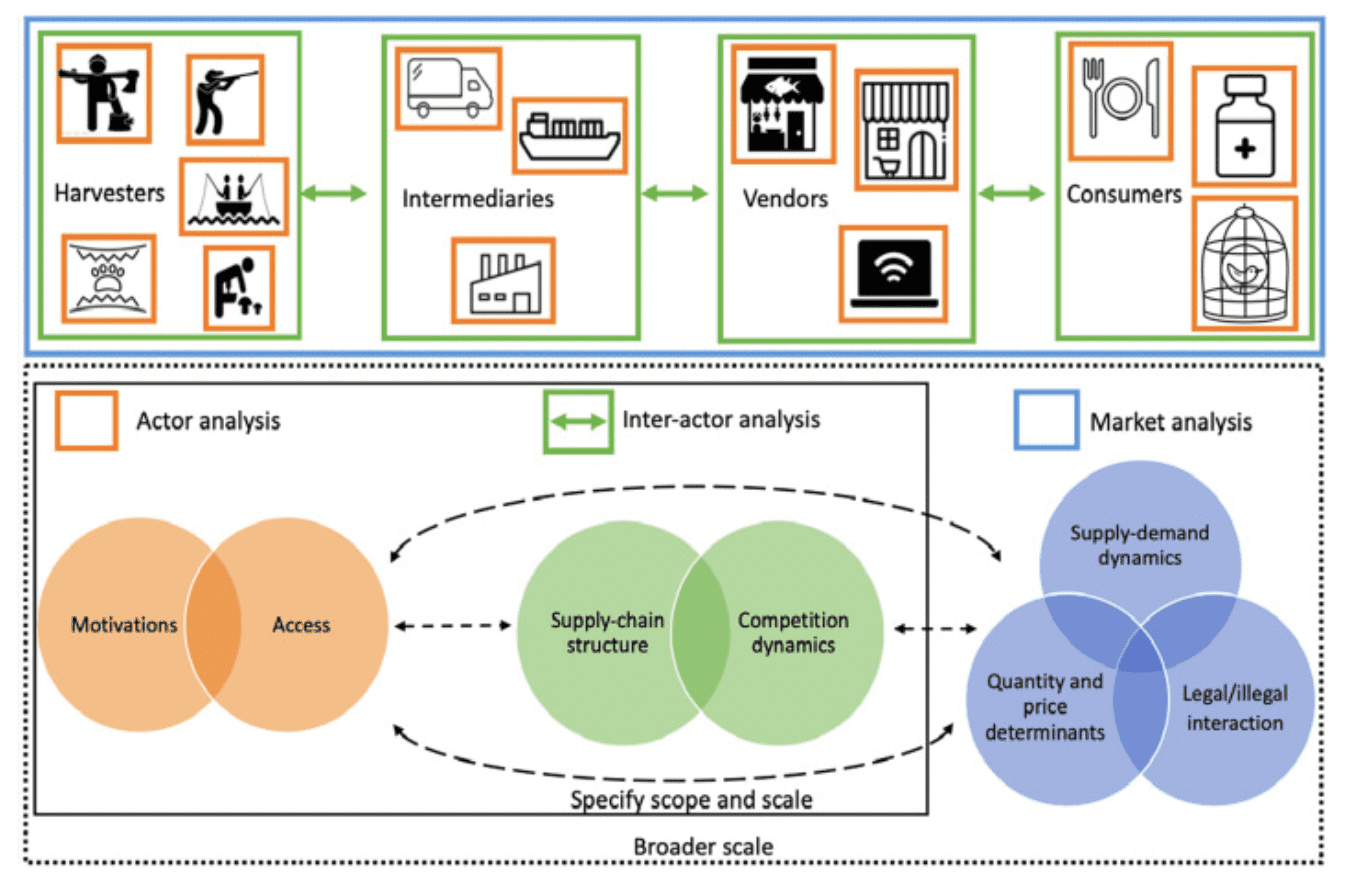A framework for assessing and intervening in markets driving unsustainable wildlife use
Understanding how markets drive unsustainable wildlife use is key for biodiversity conservation. Yet most approaches to date look at isolated components of wildlife markets, hindering our ability to intervene effectively to improve sustainability. To better assess and intervene in wildlife markets, we propose a framework that integrates three analytical levels. The first level, “actor”, assesses the underlying motivations and mechanisms that allow or constrain how actors benefit from wildlife markets. The second level, “inter-actor”, assesses the configuration of wildlife product supply-chains and the type of competition between actors participating in wildlife markets. The third level, “market”, evaluates supply-demand dynamics, quantity and price determinants, and the presence and effect of illegal products flowing into markets. We showcase the utility of the framework in a data-limited small-scale fishery case study (common hake, Merluccius gayi gayi in Chile); our mixed-method analysis provided relevant, tailored management recommendations for improving sustainability. Tackling markets driving unsustainable wildlife use needs integrated approaches that bring together the diversity of factors
affecting wildlife market dynamics
